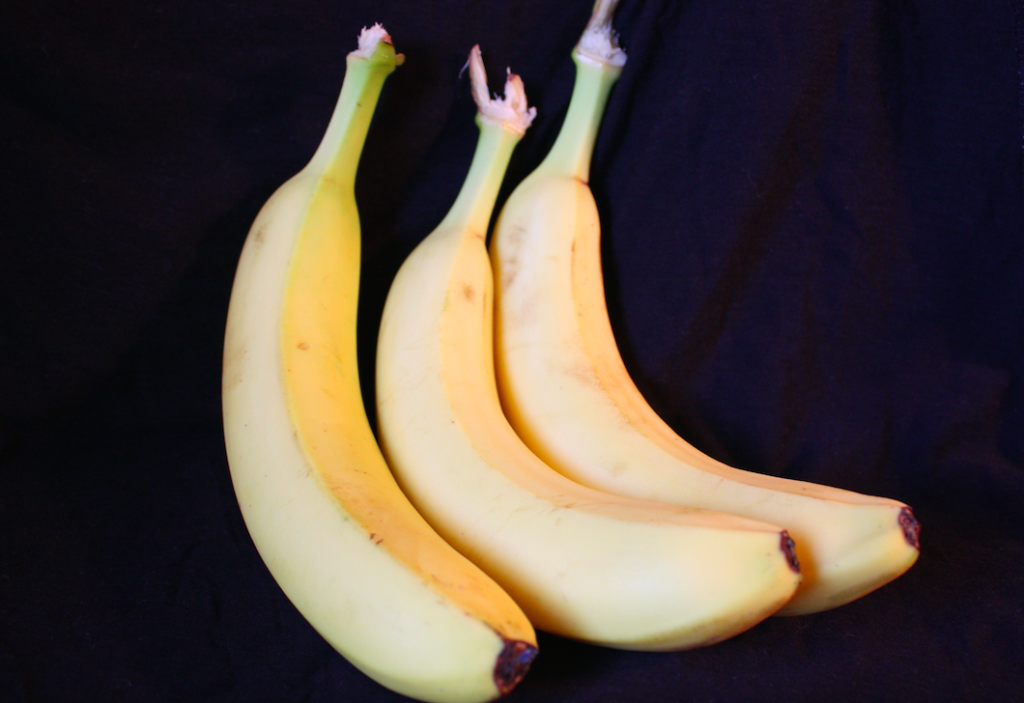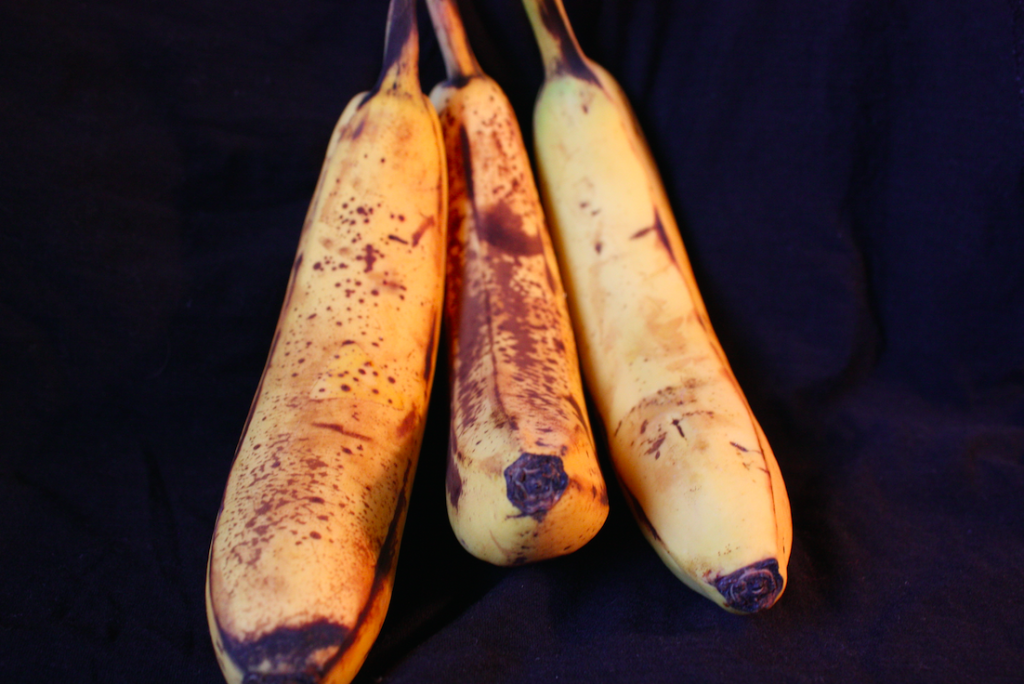There are two types of bananas, unripe and ripe. Some people like them green others love a nice mushy brown banana. Each kind of banana has certain benefits. We’ve got the lowdown on the good, the bad and the ugly when it comes to bananas.
Unripe Bananas

Photo by Jillian Skowronski
Unripe bananas appear green and waxy. They are firm and bitter to the taste with about 40 percent starch. The low glycemic index makes it take longer to digest.
Pros
Green bananas have a high resistant starch content and a low sugar content. So those who suffer from Type 2 Diabetes are better off eating a green banana than a yellow one. Unripe bananas have a probiotic bacteria that helps with good colon health. Green, unripe bananas also help you absorb nutrients, like calcium, better than ripe bananas can.
Cons
Unripe bananas have low antioxidant levels because these increase with the age of the banana. Green bananas may cause some bloating and gas due to the higher resistant starch content.
Ripe Bananas

Photo by Jillian Skowronski
A ripe banana is yellow with brown spots and is soft. There is an increased flavor, especially sweetness. It contains 8 percent starch and 91 percent sugar. The high glycemic index makes ripe bananas easy to digest.
Pros
Yellow, ripe bananas are easier to digest because the resistant starch changed to a simple sugar. Bananas also obtain higher levels of antioxidants as they ripen. Fully ripened bananas produce a substance called Tumor Necrosis Factor (TNF). This gives ripe bananas anti-cancer qualities as they combat abnormal cells in your body. With more age and dark patches, the banana has a higher immunity enhancement quality.
Cons
There is some micronutrient loss that happens with age of a banana. To lesson the vitamins and minerals lost, store bananas in the fridge. But be careful, because this makes them brown quickly. Also, the high sugar content makes ripe bananas a snack people with Type 2 Diabetes should avoid.


